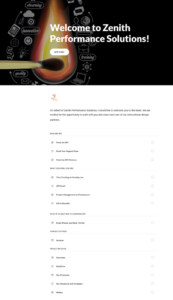The world of work has changed. Gone are the days when an employee will spend their entire career with one company, in one location. Today’s workforce is more mobile than ever before, with employees traveling for business or working from home. This presents a challenge for managers who need to design effective training programs for their remote teams. If you’re wondering how to create effective onboarding programs for remote employees, keep reading!
Use eLearning to train remote employees
eLearning is a great solution for remote employees because it allows you to train your employees without having to send them onsite. It enables you to have a consistent onboarding experience for every new employee and saves you time from teaching the same content every time a new employee begins. You can use learning to train your remote workers on topics like:
- An introduction to the organization, who it is and what it does.
- An overview of the culture, vision, mission, and values.
- How to use the company Intranet, internal network drives and spaces, and software platforms
- A review of new products or services that the company offers
- An overview of the company’s policies and procedures
Design microlearning modules for specific needs and business goals
Microlearning is a learning method that uses short, interactive sessions to teach employees the skills they need to succeed on the job. In this stage of onboarding, you can create microlearning modules that address specific issues or challenges faced by remote workers in your organization—For example, you might create short screen recordings on how to use an online collaboration tool like Slack or Zoom (two popular tools among remote teams). You can also create microlearning modules around company values and culture or even just general tips on how best to work remotely.
You don’t have to have fancy tools to create onboarding programs for remote employees
Use good instructional design and the tools that you have to create onboarding programs for remote employees that deliver the right training at the right time with the right information to make them successful in their new jobs.
- It could be as simple as a guide you create in Word with an employee handbook and a checklist.
- Or creating an online onboarding using simple tools like Canva or even PowerPoint, publish it on your website or distribute through Google Classroom or Drive, Sharepoint, or Moodle if you have an existing classroom environment set up already! The advantage of this approach is that there are no costs involved besides some time spent creating content–and if you use templates from Canva, there is even less work!
Whether you are a business of five or a business of thousands, onboarding is critical for the performance and retention of your employees. Pair the recommendations above with consistent online one-to-one sessions to build a relationship with your new employee and they are sure to stay.
Here is the Rise course we use to onboard our contractors when they work for us.


